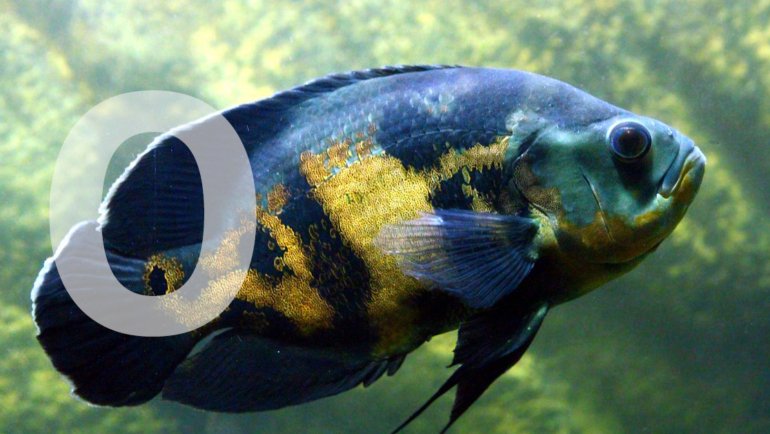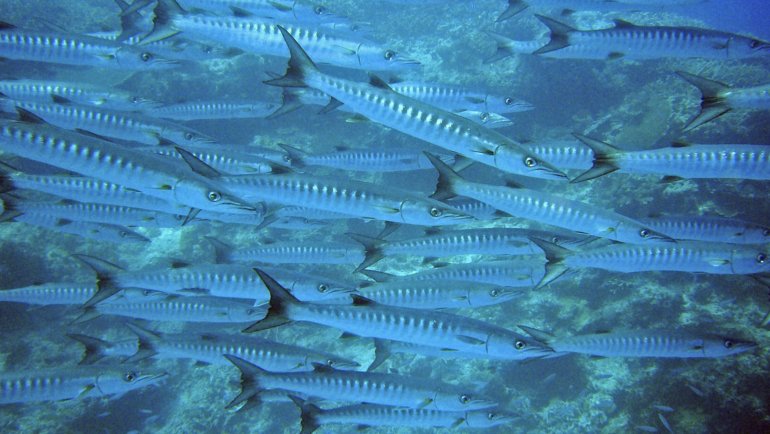Welcome to a fascinating exploration of one of the Amazon’s largest freshwater fish, the Arapaima. Known for its striking appearance and astonishing size, this river giant leads a remarkable life, teeming with exciting traits and behaviors that you wouldn’t expect from a typical fish.
Join us as we dive beneath the surface of the Amazon and discover the intriguing world of this unique aquatic creature.
The Arapaima at a Glance
Classification
| Kingdom: | Animalia |
| Phylum: | Chordata |
| Superclass: | Osteichthyes (Bony fish) |
| Class: | Actinopterygii |
| Order: | Osteoglossiformes |
| Family: | Arapaimidae |
| Genus: | Arapaima |
| Species: | A. gigas |
Essential Information
| Average Size: | 6.6 – 9.8 feet (2-3 meters) |
| Average Weight: | 220 – 440 lbs (100 – 200 kg) |
| Average Lifespan: | 15 – 20 years |
| Geographical Range: | Amazon Basin in South America |
| Conservation Status: | Data Deficient (IUCN Red List) |
Species and Subspecies
The genus Arapaima is a bit of a mystery to science. For a long time, all arapaima were considered to be part of a single species, Arapaima gigas. However, more recent studies suggest that there might be as many as five species within the Arapaima genus.
A thorough examination is still ongoing, and definitive conclusions have yet to be reached. What we can say for sure is that all arapaima are similar in their unique adaptations for living in oxygen-poor water.
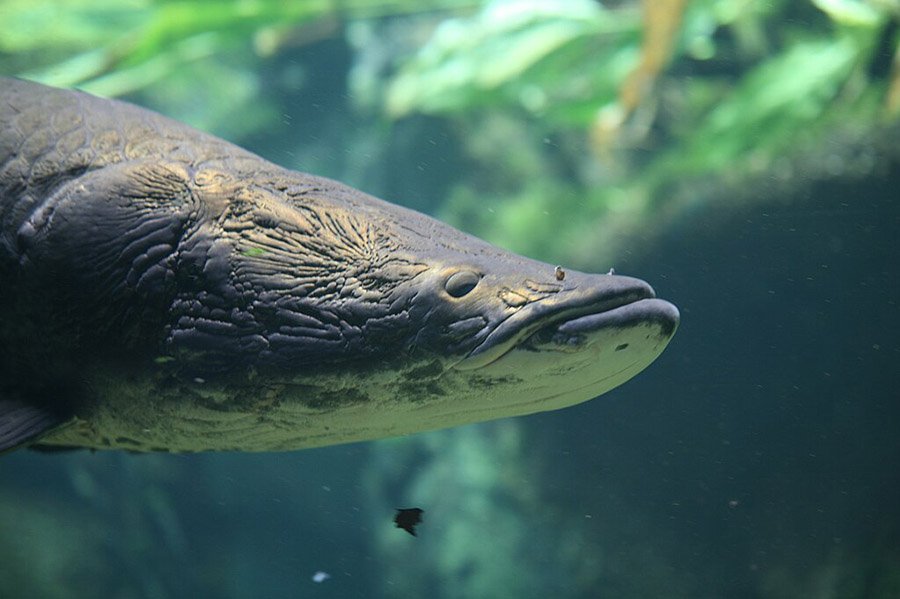
Description
The Arapaima is an easily recognizable fish, primarily due to its impressive size and unique features. It has a streamlined body covered in large, tough, overlapping scales. The color of an adult Arapaima can vary, but they generally have a blackish-blue color on the dorsal side and a more silver hue on their flanks and ventral side. The head of the Arapaima is large with a wide mouth and a bony tongue.
Arapaima are known for their size, being one of the largest freshwater fish in the world. They typically measure between 6.6 and 9.8 feet (2-3 meters) in length, and can weigh up to 440 pounds (200 kilograms).
In terms of sexual dimorphism, female Arapaima are generally larger and fuller-bodied than males. During the breeding season, males may develop a darker coloration.
Habitat and Distribution
The Arapaima is native to the Amazon Basin in South America, which includes parts of Brazil, Peru, Ecuador, Colombia, Guyana, and Bolivia. They inhabit freshwater systems such as lakes, swamps, and floodplains, especially in areas with slow-moving or standing water.
Being a bimodal breather, the Arapaima can breathe both in water and air, allowing it to survive in oxygen-poor environments that many other fish could not tolerate.
Its adaptation to gulping air allows it to inhabit the warm, shallow waters of its native range, even during the dry season when oxygen levels are typically low.
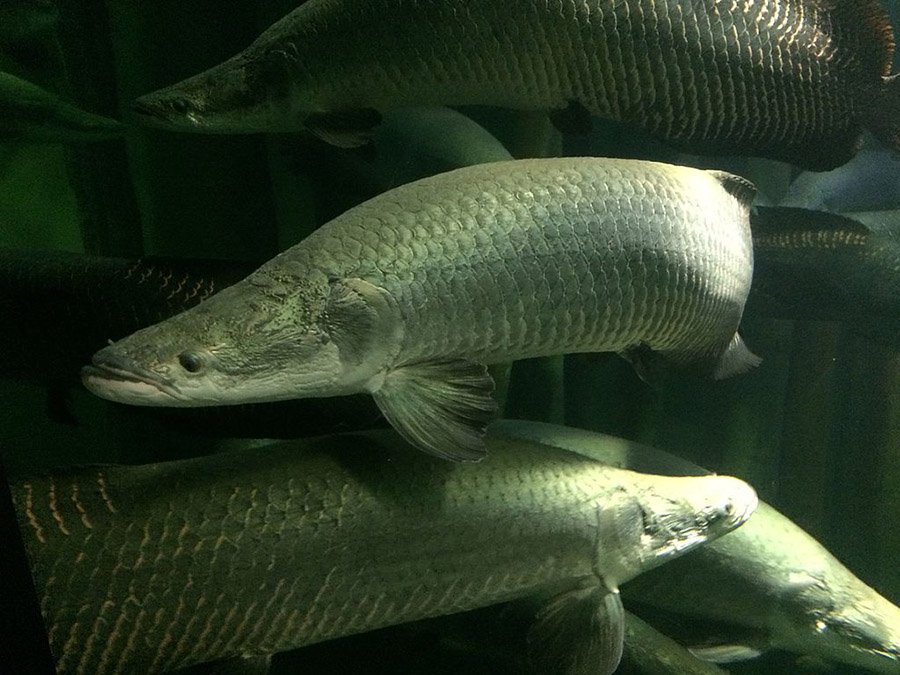
Behavior
Arapaimas are largely diurnal, or active during the day. They are known for their unique adaptation of breathing air, an ability that requires them to frequently surface (about every 10-20 minutes). During these trips to the surface, they make a distinctive coughing noise as they expel air and inhale a fresh breath.
Socially, arapaimas exhibit a complex structure. They can be found living in small groups, and during the dry season, they can form monogamous pairs. Interestingly, they are also known for their parental care, with both parents playing roles in guarding the eggs and young.
Diet and Hunting/Feeding Behavior
The Arapaima is primarily a carnivore, feeding on fish, crustaceans, insects, and even small land animals that fall into the water. They have a unique hunting strategy: using their ability to breathe air to their advantage, they often lurk near the water’s surface, waiting for prey to pass by before lunging with surprising speed and accuracy.
Arapaimas are also known to engage in “gulp-feeding,” a technique where they create a vacuum to suck in nearby prey. This, combined with their bony tongues that can crush prey against the roof of their mouth, makes them effective hunters.
Predators
As one of the largest freshwater fish species, adult arapaimas have few natural predators, with the exception of large caimans and anacondas.
Humans are also significant predators of the arapaima, both for their meat and for their scales, which have been used historically as a source of armor and in traditional medicine.
Young arapaima, on the other hand, are more vulnerable and can fall prey to a variety of carnivorous fish and birds.
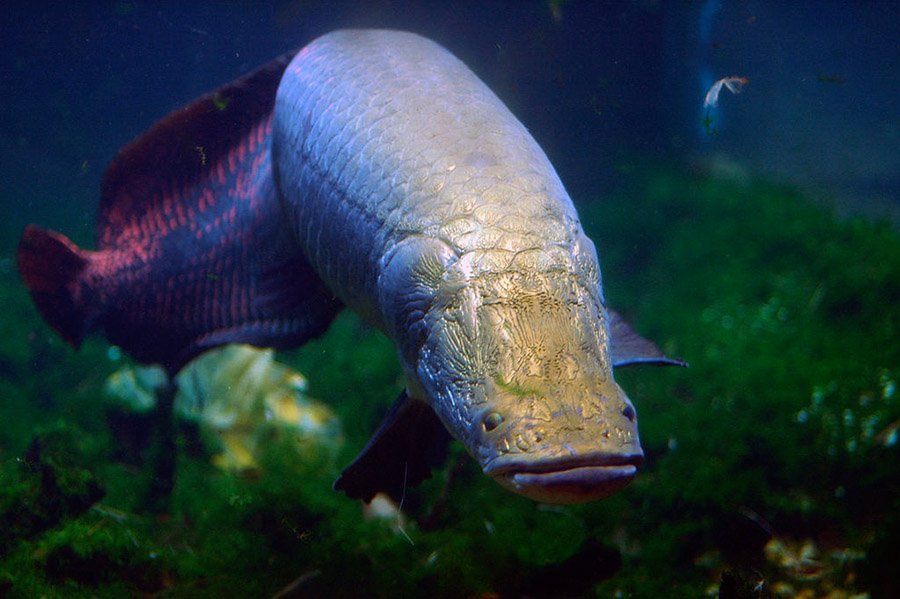
Reproduction and Life Cycle
Arapaimas engage in an annual breeding cycle, typically beginning in the dry season when the water level is low. Males and females form monogamous pairs, creating a nest in the sandy river bottom. After the female lays her eggs (up to several thousand), the male fertilizes them. The incubation period is relatively short, with the eggs hatching in around 24-48 hours.
A remarkable aspect of arapaima reproduction is parental care: the male guards the eggs and the hatched larvae, which stay in the nest for around three weeks. During this time, the male also provides oxygen to the eggs by gulping and circulating air over them. After the larvae transform into juveniles, they continue to be guarded by both parents for several months.
Conservation and Threats
The arapaima is currently classified as “Data Deficient” by the IUCN Red List due to the lack of comprehensive data about its exact population numbers. However, it is widely recognized that their numbers have drastically decreased in certain areas due to overfishing, habitat destruction, and water pollution.
Commercial fishing is one of the most significant threats to arapaima, driven by demand for its meat, which is considered a delicacy. Habitat loss from deforestation and the construction of hydroelectric dams are other substantial threats.
Conservation efforts primarily focus on regulating fishing and promoting sustainable practices. In some areas, community-based management programs have been successful in recovering arapaima populations.
Conservationists are also advocating for the protection of the arapaima’s natural habitat through the establishment of protected areas and by raising awareness about the species and its ecological importance.
Fun Facts
- The arapaima is one of the largest freshwater fish in the world. It can grow up to 10 feet long and weigh up to 440 pounds!
- These giant fish have a unique survival mechanism: they can breathe air! In oxygen-deprived waters, the arapaima can rise to the surface and gulp air into its lung-like swim bladder.
- The arapaima is often referred to as a “living fossil” because it belongs to a group of fish that has existed for over 100 million years.
- Arapaima’s scales are incredibly tough and resistant. They have been known to deflect piranha bites!
- Despite their size, arapaimas are quite the acrobats. They have been known to leap out of the water to catch birds and other small animals!
Frequently Asked Questions
How big can Arapaimas get?
Arapaimas can grow up to 10 feet in length and weigh up to 440 pounds. However, most arapaimas caught these days are less than 6 feet due to overfishing.
Can arapaimas breathe air?
Yes, they can! Arapaimas have a unique adaptation that allows them to breathe air. They can gulp air into their lung-like swim bladder, allowing them to survive in waters low in oxygen.
What do arapaimas eat?
Arapaimas are carnivores, eating a diet of fish, crustaceans, and even small land animals that come near the water’s edge. They have been known to leap out of the water to catch prey.
How long do arapaimas live?
Arapaimas can live up to 15-20 years in the wild, but this can be significantly less due to overfishing and habitat loss.
Are arapaimas endangered?
The Arapaima is listed as “Data Deficient” on the IUCN Red List due to a lack of comprehensive data about its population. However, it’s known that the species has been heavily impacted by overfishing, habitat destruction, and water pollution.
Top image: Wikimedia Commons



